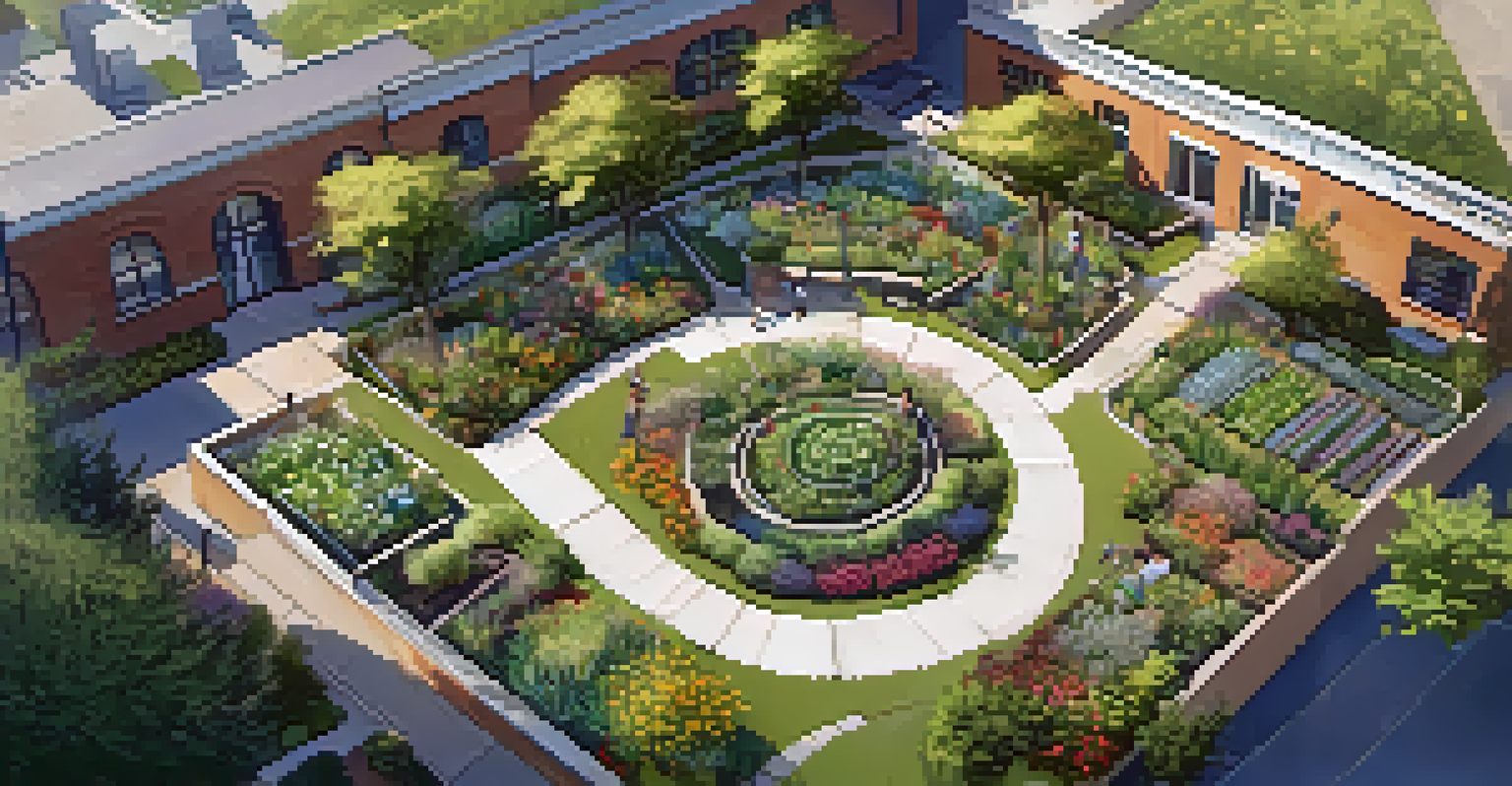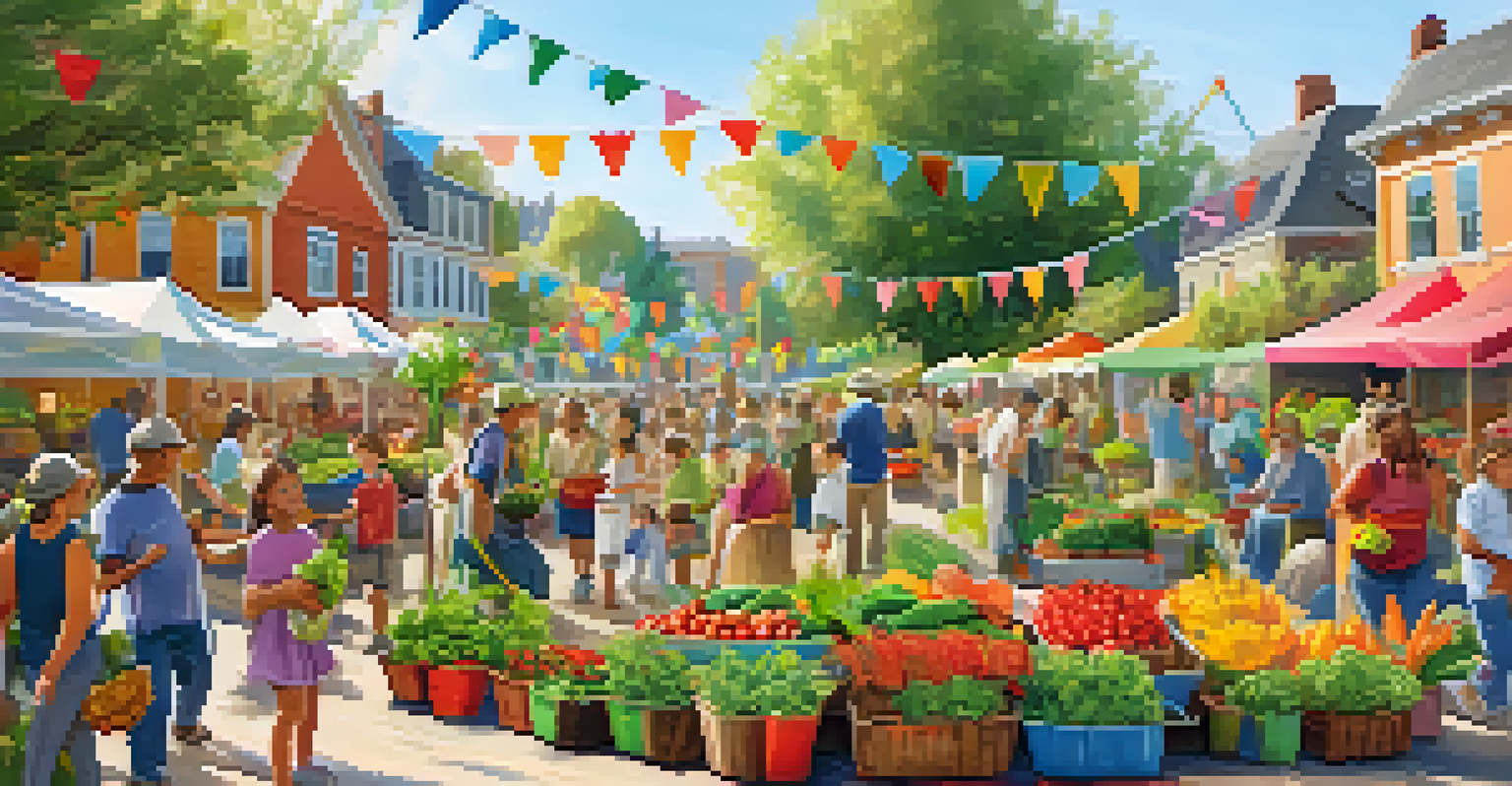How to Start a Community Garden for Local Sustainability

Understanding the Benefits of Community Gardens
Community gardens are not just about growing plants; they cultivate community spirit. They provide fresh produce, which can reduce reliance on store-bought goods, promoting a healthier lifestyle.
The greatest service which can be rendered to any country is to add a useful plant to its agriculture.
Moreover, these gardens foster social connections among neighbors, breaking down barriers and encouraging collaboration. Think of it as a shared backyard where everyone contributes and benefits.
By creating green spaces, community gardens can also enhance local biodiversity, supporting wildlife and improving air quality. It's a win-win for both people and the planet!
Gathering Support and Building a Team
Before digging into the soil, it's essential to gather support from your community. Start by holding a meeting or event to discuss the idea of a community garden and gauge interest.

Building a dedicated team of volunteers is crucial. Consider forming a steering committee consisting of diverse skills, from gardening enthusiasts to those with organizational expertise.
Community Gardens Foster Connections
These gardens encourage social bonds among neighbors, promoting collaboration and community spirit.
Encouraging local businesses to sponsor the garden can also provide resources and foster community ties. A little outreach can go a long way in creating a solid foundation for your garden.
Choosing the Right Location for Your Garden
Location is key when it comes to starting a community garden. Look for vacant lots, parks, or even schoolyards that are accessible and have enough sunlight for plants to thrive.
Gardening is a way of showing that you believe in tomorrow.
It’s important to check the soil quality and ensure the area is free from contaminants. You might need to conduct a soil test, which can be done through local agricultural extensions.
Accessibility is also crucial; your garden should be easy for everyone to reach, including those with mobility challenges. A well-chosen location can make or break the success of your garden.
Designing Your Community Garden Layout
Designing the layout of your garden is like creating a masterpiece; it requires thought and creativity. Consider dividing the space into individual plots, communal areas, and pathways to enhance accessibility.
Incorporating elements like benches or picnic tables can encourage social interaction among gardeners. Think of your garden as an outdoor living room where people can relax and connect.
Location is Crucial for Success
Choosing the right spot ensures accessibility and a thriving environment for plants and gardeners alike.
Don't forget about sustainability! Incorporating native plants and pollinator-friendly species can create a thriving ecosystem that benefits everyone involved.
Securing Necessary Permissions and Resources
Before you start planting, it's crucial to secure the necessary permissions. This may involve obtaining a community garden permit from your local government or landowner.
Additionally, consider looking for grants or funding opportunities to support your garden. Local nonprofits, gardening organizations, or even crowdfunding can provide financial backing.
Resource sharing is also important; ask for donations from local businesses, or set up a tool-sharing system among gardeners. This not only saves money but also reinforces community bonds.
Choosing Plants for Your Community Garden
Selecting the right plants is essential for a thriving community garden. Consider growing a mix of vegetables, herbs, and flowers that cater to the tastes and needs of your community members.
It's beneficial to start with easy-to-grow varieties, especially for beginners. Think of tomatoes, lettuce, or radishes, which can yield great results and boost gardeners' confidence.
Maintenance Keeps Gardens Flourishing
Establishing a shared maintenance schedule helps distribute responsibilities and fosters a sense of belonging.
Involving the community in the plant selection process can make everyone feel invested. Organizing a planting day can turn into a fun event, bringing people together while they learn about gardening.
Maintaining Your Community Garden Together
Maintenance is key to keeping your community garden flourishing. Establish a schedule for watering, weeding, and harvesting to ensure everyone contributes equally.
Creating a shared responsibility system can help avoid burnout. Assign tasks based on interests and strengths—some may prefer planting while others enjoy organizing events.

Regular meetings and celebrations can keep the community spirit alive. Sharing not just the harvest but also experiences fosters a sense of belonging and pride in your garden.
Celebrating Your Community Garden's Success
Once your community garden is up and growing, it's time to celebrate! Organizing events such as harvest festivals or garden tours can showcase the hard work of everyone involved.
These celebrations not only recognize the contributions of gardeners but also invite the wider community to engage. It’s a great way to spread awareness about the benefits of local sustainability.
Sharing success stories through social media or local news can inspire other communities to start their own gardens. Your garden can become a beacon of hope and collaboration for sustainable living!